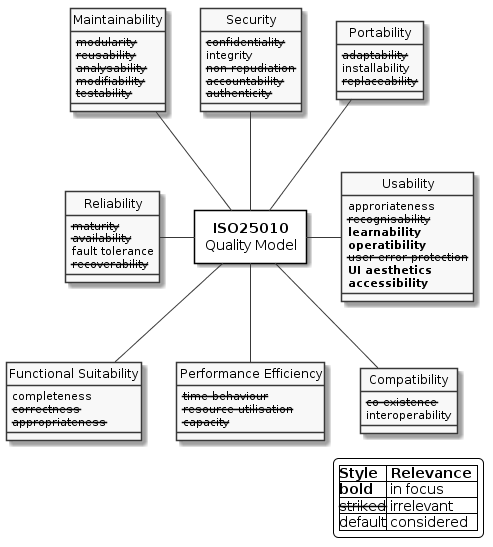Introduction and Goals
The goal of the Home Entertainment system is let people watch TV programs via satellite or stream content from the internet.

Requirements Overview
The main system requirements are:
-
HE-SYS-01: Convert satellite television program into video and audio signal -
HE-SYS-02: Change television program using a remote control -
HE-SYS-03: Stream video/audio content from the internet -
HE-SYS-04: Control streaming content via LAN connected device e.g. smartphone -
HE-SYS-05: Automatically check for updated software
Quality Goals
The following diagram shows the weighted SQuaRE model of ISO25010 (Systems and software Quality Requirements and Evaluation - System and software quality models).

The main focus of the system lies on Usability by the Owner and Viewer. Security aspects are relevant to the extent that neither the system integrity nor the Owners privacy may be compromised. The third category of important quality attributes concerns the compatibility of the entire system that should allow easy installation and a certain degree of fault tolerance towards errors in individual system components.
As the system is a consumer good with relatively short lifespan, maintainability is not of high importance.